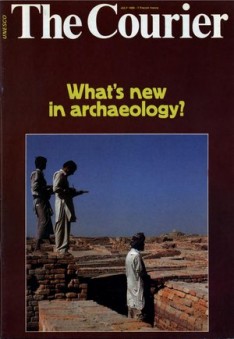
What's new in archaeology?
Archaelogy, the study of man's past through the material remains of human activity, has come a long way since it originated among the leisured connoisseurs of sixteenth-century Europe. Whereas the early excavators, it has been said, "were little better than grave-robbers", today's archaeologists are specialists who investigate the past using forensic skills buttressed by a formidable array of scientific and technological expertise.
At the same time, in the late twentieth century the material remains of the past are more than ever impossible to ignore. They are uncovered every day by urban development projects and large-scale engineering works. New nations seeking to establish their own identity feel the importance of a heritage which not only defines the past cultural achievements of their peoples but is also an essential factor in national development. Paradoxically, an age bent on change has come face to face with its past.
In this changing climate archaeology has assumed a new importance and is itself changing. Its activities are expanding into new fields (urban archaeology, industrial archaeology, seismological archaeology...). New theoretical approaches are being developed, and new scientific techniques have made it possible to chart the past of every country more reliably than ever before. The traditional picture of the spade-wielding archaeologist is undergoing drastic modification. A modern archaeologist is part of a multidisciplinary team and may call on télédétection from space as a means of prospection, use a computer for such varied tasks as making a threedimensional site-map or getting access to the latest archaeological data, and rely on nuclear physics to analyse his finds, as well as appealing to sciences as varied as botany, entomology and even the study of ppllen, diatoms and fishbones.
All the same archaeology still means spadework, and to prove it we have chosen to present two major recent excavations in Latin America and Central Asia. The uncovering in the heart of Mexico City of the Great Temple levelled by the Spanish after the conquest in the sixteenth century is one of the most exciting recent events in Latin American archaeology. Equally enthralling is the discovery by Soviet archaeologists of a fabulous Bactrian treasure in the heart of central Asia. If archaeology today is interdisciplinary it is also, and increasingly, international. Here Unesco has played a leading role for many years, largely as a result of international campaigns to save the world cultural heritage, symbolized in this issue by Moenjodaro in Pakistan.
Last but not least, in International Youth Year, archaeology can tap the enthusiasm of a host of amateurs, many of them young people, whose very existence is a challenge to modern archaeologists wishing to give real meaning to the phrase "democratization of the past".
Editor in chief: Edouard Glissant


